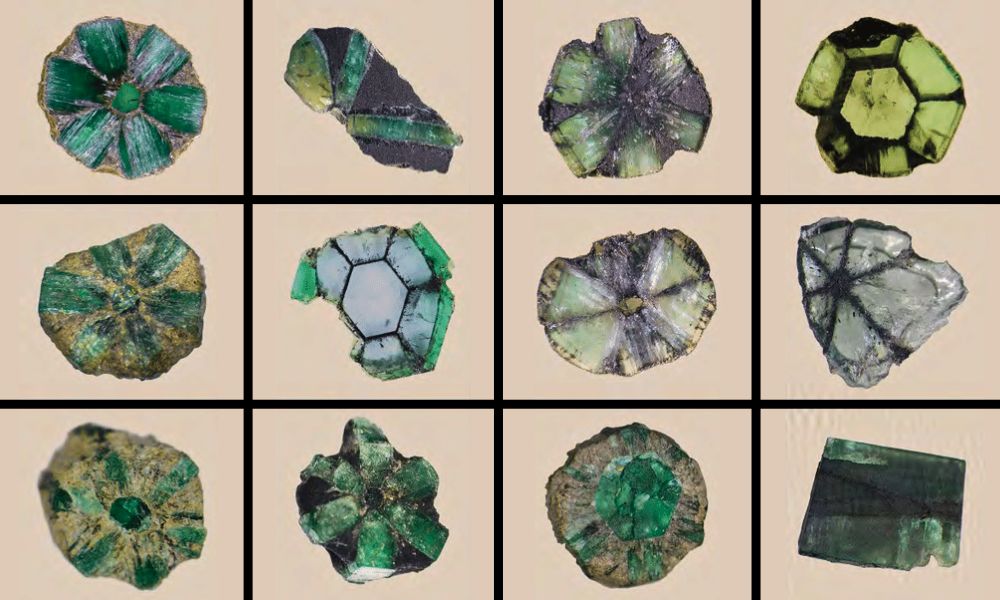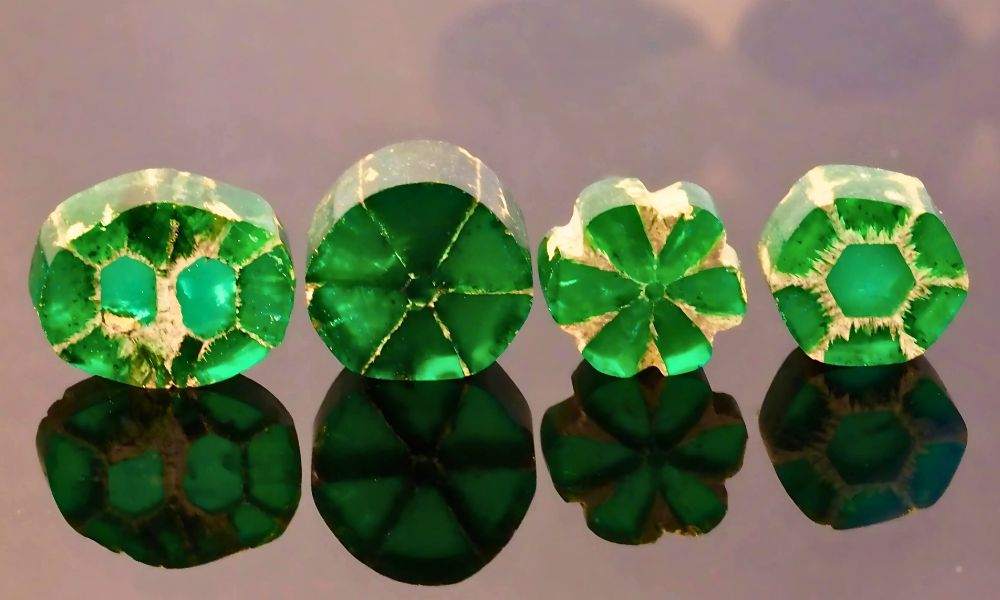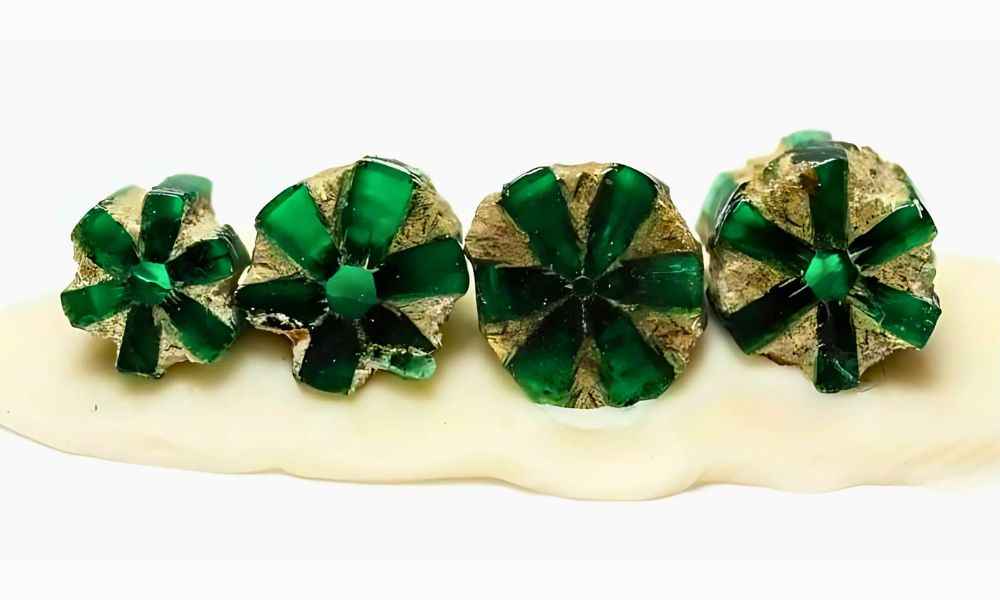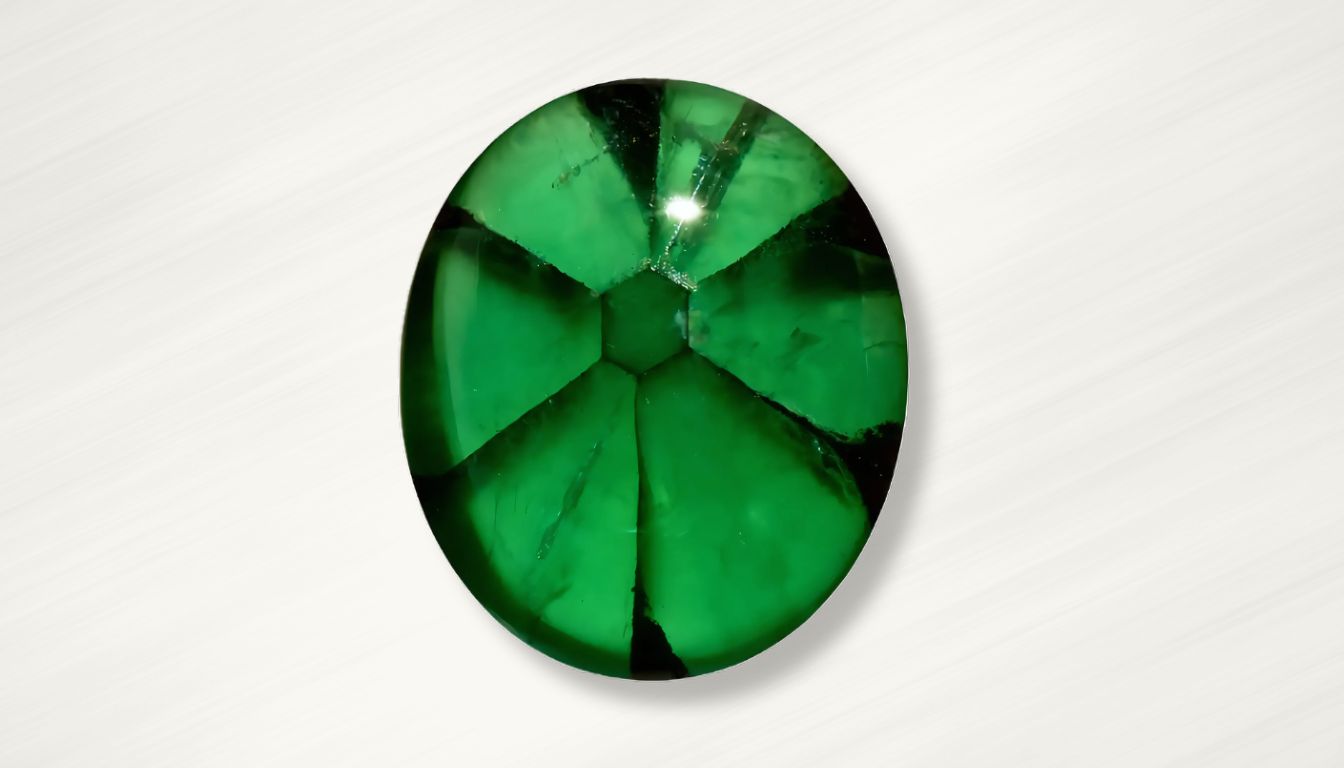They come to us in fresh stunning shades of green and speaking of emerald green, a few emerald varieties can make gem lovers go ga-ga like trapiche emeralds. They are different minerals that have scarce properties which makes them valuable gemstones. In this article, we’ll take a closer look at what the origins and features of trapiche emeralds are, as well as why they matter.
Table of Contents
What is a Trapiche Emerald?

Trapiche emeralds are a specific kind of emerald with star-shaped features that look like the spokes of a wheel or the petals of a flower. This phenomenon is due to the fact of inclusions – the contact point or apparent outlet where at least three crystals grew out from the same area or region. The name is itself a word in the Colombian language that refers to the machine used to crush sugarcane, giving trapiche gemstone its credit.
Origins
Most of the Trapiche emeralds can be sourced in Colombia, specifically in the mines of Muzo and Chivor. These mines are famous for yielding some of the best quality emeralds in the world and trapiche emerald is a rarity even within the Colombia emerald. Sub Geological factors and the presence of specific minerals in these regions are responsible for the formation of trapiche-type emeralds; hence these are considered magnificent creations of Mother Earth.
What is the Process of the Trapiche Emerald Formation?

When it comes to the formation of an emerald crystal at some point black carbonaceous material may get into the gemstone matrix. Due to its hexagonal crystal structure, these impurities may get accommodated at the contact points of two crystals and hence, may form a six-prong star-like structure. In some trapiche emeralds, the existing features of albite, quartz, and carbonaceous things may encircle hexagonal emerald core. From there, they slant away in the form of spokes which partition the surrounding green material into six trapezoidal segments.
The central, tapered emerald core first forms under hydrothermal conditions, but should hydrothermal conditions slow the dimensions of the central tapered emerald core may be disrupted and impurities may enter the mix. Thus, under favorable growth conditions, it can crystallize emerald as well as, for instance, albite. While the ABC faces of the lateral growth can retain plainness thus forming pure emerald, albite invades the area’s growth from the periphery between the prism faces. This leads to six sectors of clear emerald and six that contain both clear and colored albite with most of it being emerald. Therefore, the central core of the trapiche emerald and the six trapezoidal sectors around it consist of a single crystal that is untwined.
Unique Characteristics

Color
Trapiche emeralds come in hard and deep green and also translucent and light green. The Emperor’s green color and brightness of the GEMS may be highly influenced by the specific area within the mine that produces the emerald. They also note that in many cases, trapiche emeralds feature a lovely pair of greens, and no two stones are alike.
Inclusions
It was seen that the inclusions are indeed the element that distinguishes trapiche emeralds with the pattern that they portray. These inclusions are mainly of white calcite and pyrite and thereby form the star-like projections on the stone. Unlike other emerald types, the imperfections can define their increased worth through features of a diamond-like structure.
Clarity and Cut
The inclusions of Trapiche emeralds are generally larger than those of normal emeralds, but this does not reduce the demand. It has become a tradition that collectors look for trapiche emeralds for the specific characteristics of their natural inclusions. The most attractive trapiche emerald usually has its facets well planned to fit the star that is usually in the emeralds, mostly as cabochons or free form.
Top of Form
Cultural Significance

Colombian culture and history are very rich and famous trapiche emeralds are very popular and significant. They have been in use for several hundred years with the pre–Columbian civilizations using them for barter as well as ceremonial purposes. Today, trapiche emeralds are associated with prosperity, success, and richness which is why they are widely used in jewelry and demanded presents for collectors.
Apart from the esthetic and economic aspects, these emeralds are regarded as protector stones in many cultures. It is also considered that they bring good fortune and peace; that is why such items are welcome gifts and cherished heirlooms.
Care and Maintenance

In this respect, trapiche emeralds like any other gemstone need to be well taken care of so that it may retain its allure. Here are some tips:
Cleaning: Wipe your emerald gently with a soft cloth in connection with mild soap. Do not use hot chemicals and ultrasonic cleaners since they will harm the stone.
Storage: This is intended to avoid scratching the emeralds, therefore you should store your emeralds in a different place. Employ a soft pocket or a jewelry box they have small sections for the pieces.
Avoid Heat: Try also not to expose your trapiche emerald to strong heat sources of sunlight because this can make it fade away. Bottom of Form.
Conclusion
Trapiche emeralds are not only the splendid stones for jewelry but rather the specialties of our planet, that reflect the experience of centuries-long development of Colombian culture. Due to the unique reversal system, jewel tones, and historical relations, they can indisputably be considered as an essential addition to any collection of precious and semiprecious stones. Like the trapiche emerald jewelry, these emeralds evoke every little possibility of what is possible and represent the allure of nature. So, you have a gem in your hands, but also a real masterpiece created by time and nature if you can own one.
FAQs about Trapiche Emerald
Q1. Is trapiche emerald rare?
It is a very rare color version of the emerald gemstone containing a six-arm radial figure of generally black sections or lines dividing regions of emerald green.
Q2. What causes trapiche emerald?
The trapiche pattern originated from the black carbon inclusion or other minerals such as albite which crosses the hexagonal structural layout of the emerald. During the growth of the emerald, these inclusions are forced to be on the core of the crystal with the structure like a spoke.
Q3. What is the rarest color emerald?
The more infernal an emerald is, or the ‘greener’ it is, the higher its value. The various types of emerald crystals will seem to have an extremely deep green-blue hue to them. Gem-quality emeralds are mined all over the world with some of the significant finds in Colombia, Brazil, Afghanistan, and Zambia.
Q4. What is trapiche used for?
A trapiche is a mill made up of wooden rollers utilized to separate juice from pulp from specific fruits, initially olives and later, from the Middle Ages, sugar can also. By extension, the word is also sometimes applied to the location of the mill, whether the workshop or the entire plantation.
Q5. Where do 90% of emeralds come from?
Today, Colombia in the north of South America remains the only nation that mines and produces the most emeralds for the world and the finest ones. According to estimations of market specialists, Colombia supplies 70-90% of emeralds globally.
Stay Tuned to Gems Tycoon for all gems-related articles.









